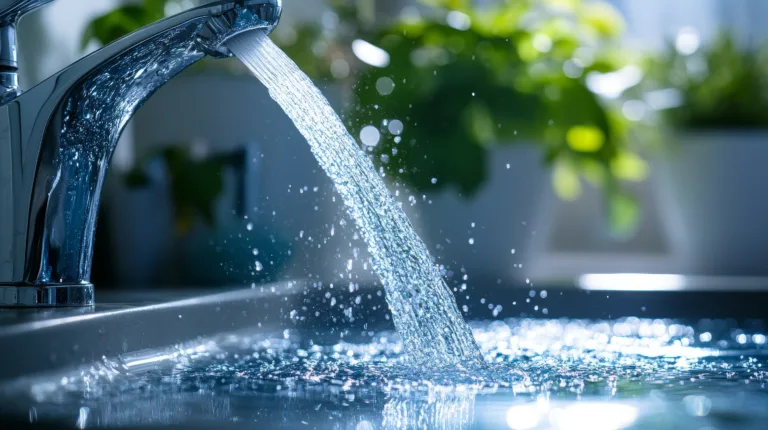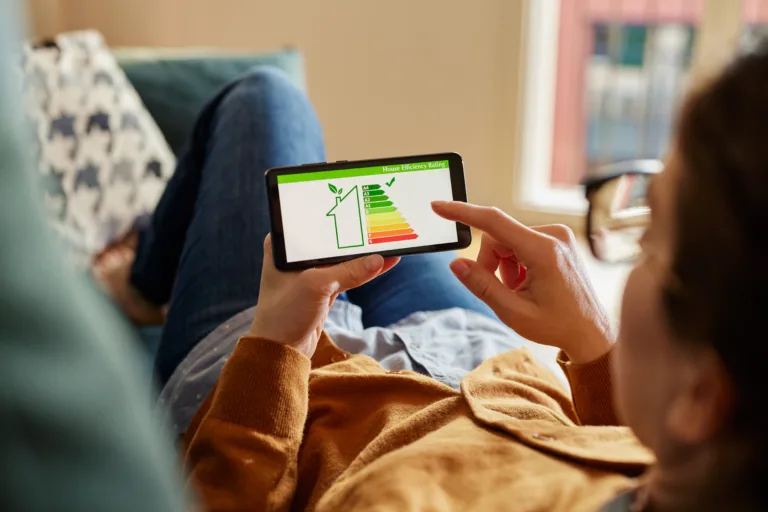As a Phoenix homeowner understanding your HVAC system can help you make informed decisions when it comes to repairs, maintenance, and upgrades. It also makes it easier to understand and communicate with your HVAC technician when they are working on your unit and suggesting repairs or services. At Hansen Family Plumbing & Air, we believe in transparency and education, so here’s a breakdown of some essential HVAC terms every homeowner in Greater Phoenix should know.
For HVAC repair, maintenance, and installation services in Greater Phoenix, contact our team today!
1. SEER (Seasonal Energy Efficiency Ratio)
Definition: SEER measures the energy efficiency of an air conditioning unit. The higher the SEER rating, the more efficient your system will be.
How It’s Used: A SEER rating is an important factor when choosing a new AC system in Arizona. In our extreme summer heat, a high SEER rating (ideally 16 or higher) means lower energy bills and better cooling performance.
2. AFUE (Annual Fuel Utilization Efficiency)
Definition: AFUE measures how efficiently a furnace converts fuel into heat. Expressed as a percentage, a higher AFUE means less wasted energy.
How It’s Used: If you have a gas furnace, its AFUE rating will tell you how much of your fuel is converted into usable heat. For example, an AFUE of 90% means 90% of the fuel is used to heat your home, while the other 10% is lost.
3. BTU (British Thermal Unit)
Definition: A BTU measures the amount of heat an HVAC system can produce or remove.
How It’s Used: When selecting an AC unit or furnace, BTUs help determine the right system size for your home. An undersized system won’t effectively cool your home, while an oversized unit may short cycle and reduce efficiency.
4. MERV (Minimum Efficiency Reporting Value)
Definition: MERV rates the effectiveness of an air filter in trapping airborne particles. The scale ranges from 1 to 20, with higher numbers filtering smaller particles.
How It’s Used: Homes in Phoenix often deal with dust and allergens. A filter with a MERV rating between 8 and 13 is recommended to improve indoor air quality without overworking your system.
5. Refrigerant
Definition: Refrigerant is a chemical compound that absorbs and releases heat, allowing your air conditioner to cool your home.
How It’s Used: Common refrigerants include R-22 (which has been mostly phased out) and R-410A. If your AC is low on refrigerant, it may indicate a leak, which should be repaired by a professional. If your AC is older and requires R-22 and is low on refrigerant, you likely will need to replace your AC as R-22 is not only hard to come by but very expensive at this stage of the phase out.
6. Heat Pump
Definition: A heat pump is a system that provides both heating and cooling by transferring heat rather than generating it.
How It’s Used: In Arizona, heat pumps are a popular alternative to traditional furnaces because they efficiently cool in the summer and provide sufficient warmth during the region’s mild winters.
7. Split System
Definition: A split system consists of two main components: an outdoor unit (containing the compressor and condenser) and an indoor unit (containing the evaporator coil and air handler).
How It’s Used: Many homes in the Greater Phoenix region use a split system for cooling. The outdoor unit disperses heat outside, while the indoor unit cools and circulates air throughout your home.
8. Air Handler
Definition: The air handler is the indoor component of an HVAC system that circulates conditioned air throughout your home.
How It’s Used: Homes with heat pumps or split AC systems have an air handler that works with the outdoor unit to distribute air efficiently.
9. Ductwork
Definition: Ductwork consists of the metal or flexible tubes that deliver heated or cooled air from your HVAC system to different rooms.
How It’s Used: Well-maintained ducts ensure efficient airflow. Leaky or dirty ducts can lead to higher energy bills and reduced system performance.
10. Damper
Definition: A damper is a valve or plate inside ductwork that regulates airflow to different areas of the home.
How It’s Used: Dampers are often used in zoning systems to control airflow to specific rooms, improving comfort and energy efficiency.
11. Heat Exchanger
Definition: A heat exchanger is a component in a furnace that transfers heat from the combustion process to the air that circulates through your home.
How It’s Used: A cracked heat exchanger can pose a safety hazard by leaking carbon monoxide, so regular HVAC maintenance is essential.
12. Condenser
Definition: The condenser is the outdoor unit of an air conditioning system that releases absorbed heat outside.
How It’s Used: The condenser works with the evaporator coil and refrigerant to cool your home by expelling heat from the indoor air.
13. Compressor
Definition: The compressor is a crucial component of an AC or heat pump that pressurizes refrigerant to help facilitate the heat transfer process.
How It’s Used: If your compressor fails, your AC won’t be able to cool your home properly. Compressors can wear out over time, especially in Phoenix’s hot climate.
14. Thermostat
Definition: A thermostat controls your HVAC system, allowing you to set and maintain your desired temperature.
How It’s Used: Smart thermostats, like Nest or Ecobee, optimize energy use by learning your habits and adjusting temperatures accordingly. These thermostats also allow you to control the temperature of your home by using an app on your smartphone. For the many snowbirds that live part time in Greater Phoenix, this smart technology is ideal. You have full access to your home’s temperature no matter where you are in the world.
15. Humidifier
Definition: A humidifier adds moisture to the air inside your home, improving indoor air quality and comfort.
How It’s Used: While Phoenix has dry air year-round, some homeowners install humidifiers to prevent dry skin, respiratory issues, and static electricity.
16. Zoning System
Definition: A zoning system divides your home into different areas, each controlled separately for heating and cooling.
How It’s Used: If you have a large home or rooms that heat/cool unevenly, a zoning system improves comfort and efficiency by directing airflow where it’s needed most.
Need Help with Your HVAC System?
Understanding these terms can help you communicate more effectively with your HVAC technician and make informed decisions about repairs and upgrades. If you have questions or need service, Hansen Family Plumbing & Air is here to help! Contact us today to schedule an appointment.


